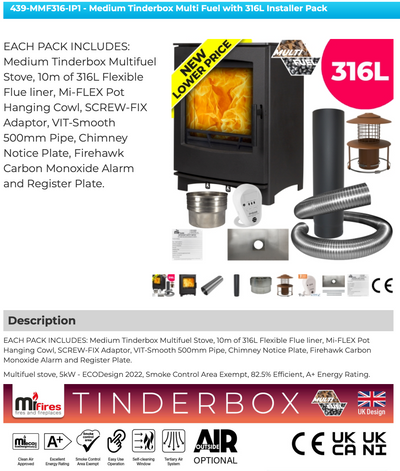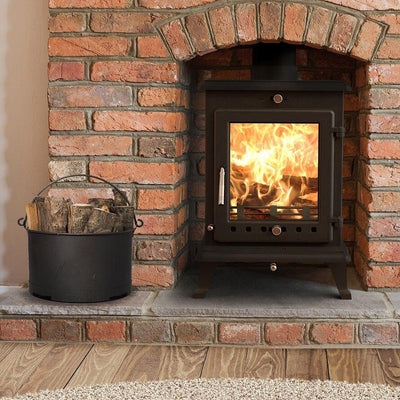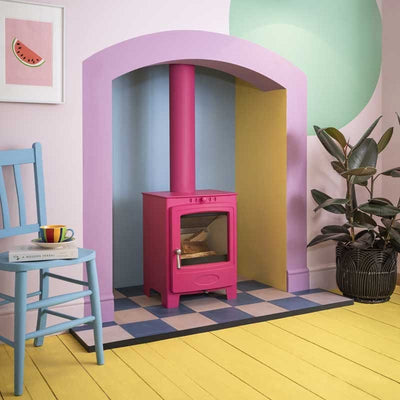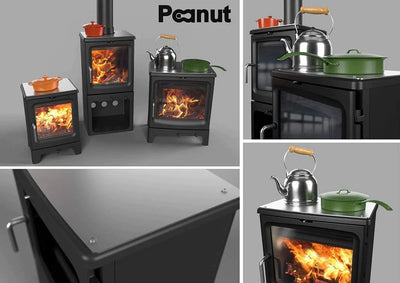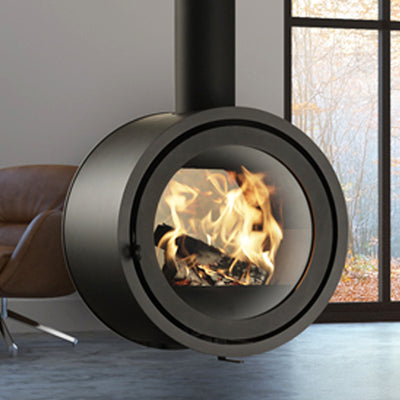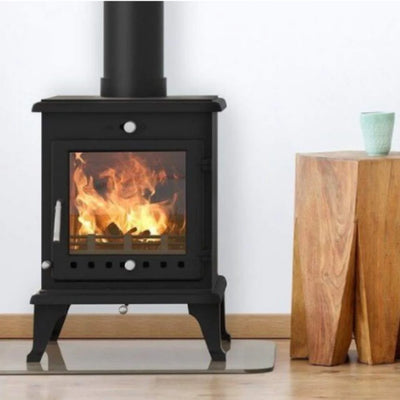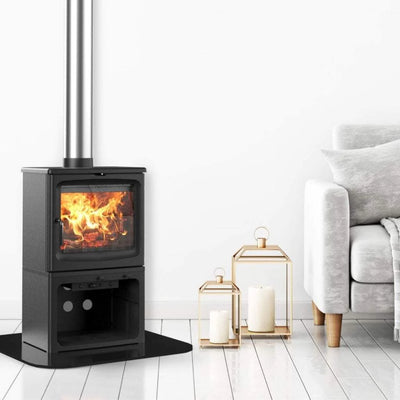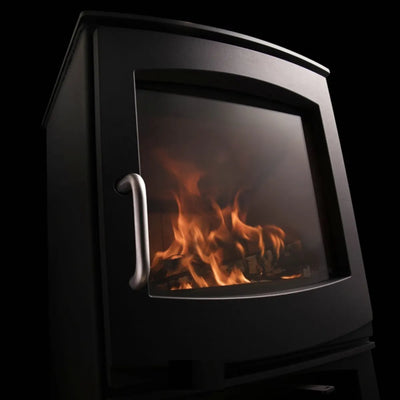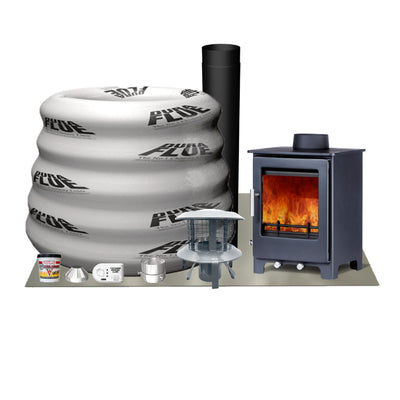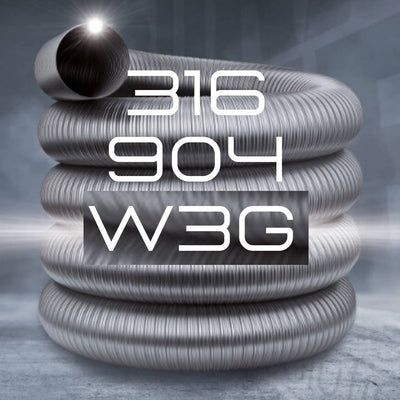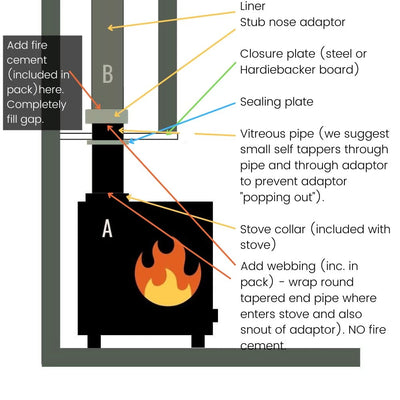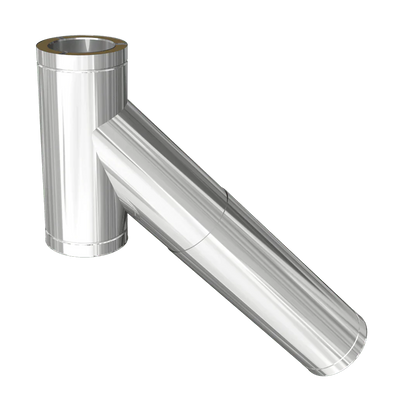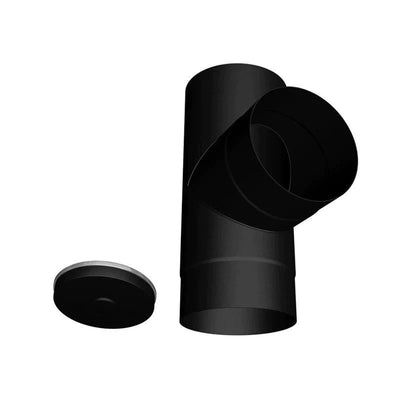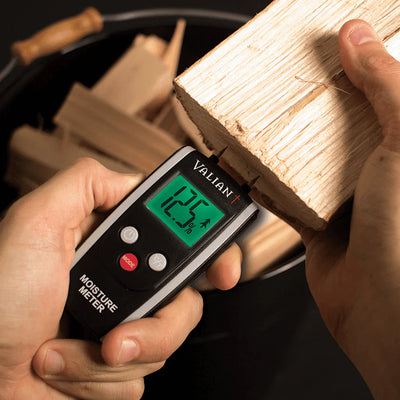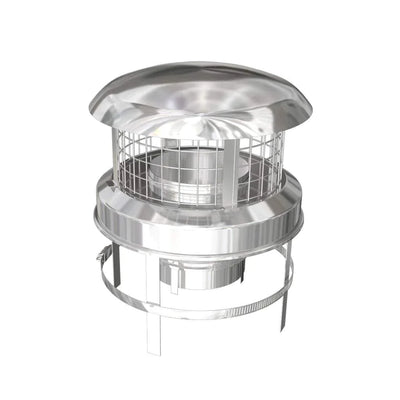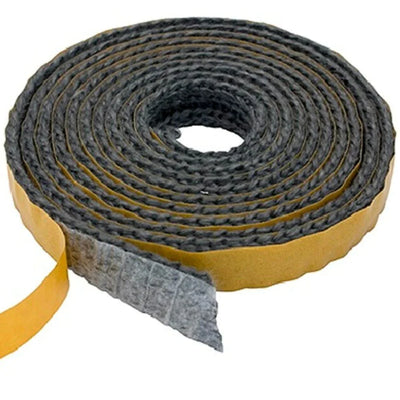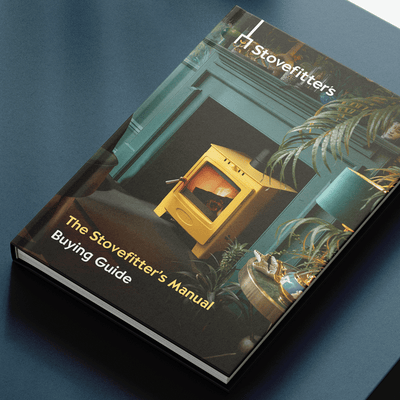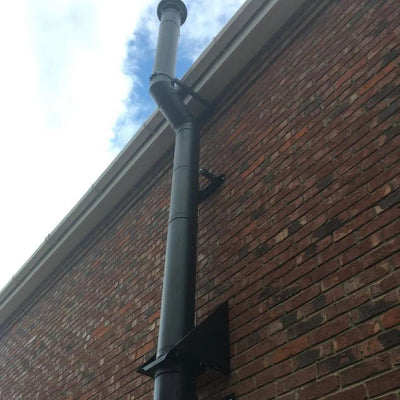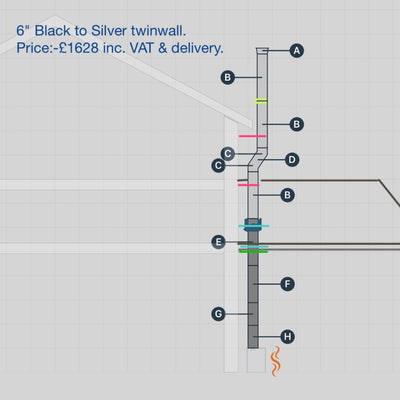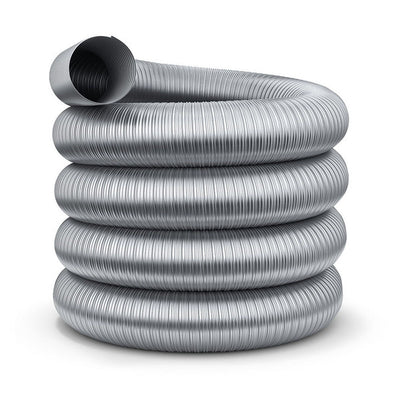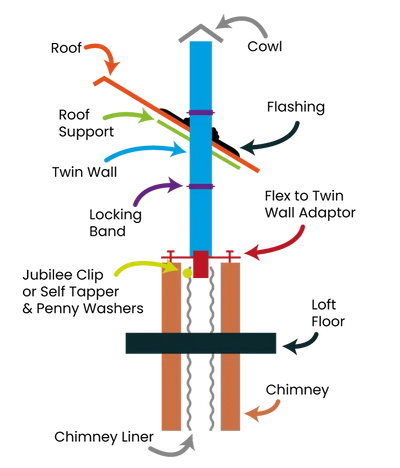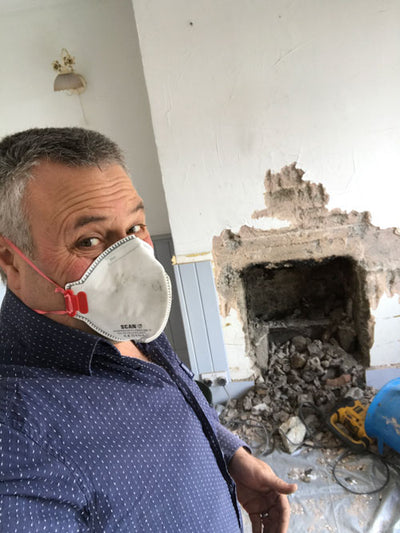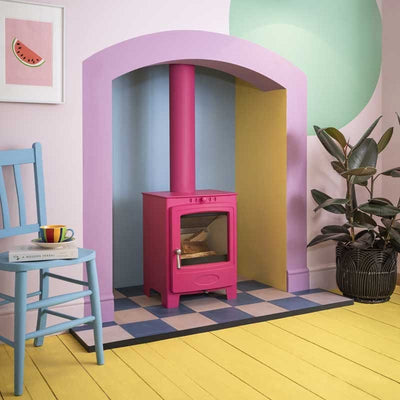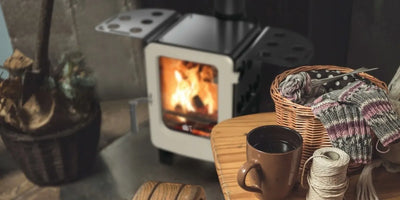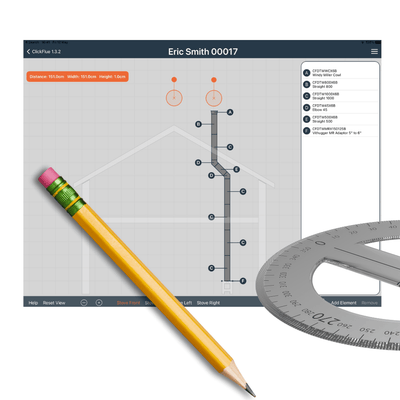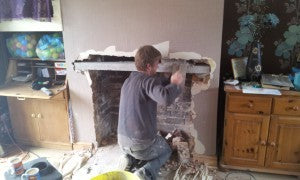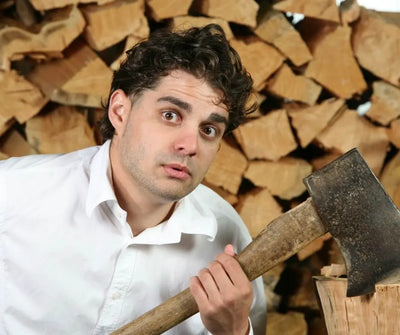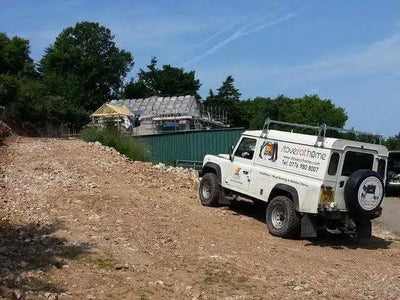Wood burning stoves and carbon monoxide
5 mins
Wood burning stoves and carbon monoxide
Carbon Monoxide
The signs of Carbon Monoxide poisoning
In my earlier years of stove fitting I fitted a few stoves connected “direct to brick/stone chimney” (i.e. no chimney liner), some under Building Control approval (inspected by the local Building Control officer). I used to pride myself on “saving the customer a few pounds”, after all “open fires have been pumping smoke in to chimneys for thousands of years”. So why worry today?
I knew that some stove fitters refused to fit stoves without stainless steel chimney liners. A bit silly I thought. Why waste money when one has a perfectly okay-looking chimney?
It wasn’t long though before I had a complete change of heart. Two incidents brought me to this conclusion: an install of my own that concerned me and a story told to me by a person who investigates solid fuel “incidents”.
Some terminology: If a chimney is a polo mint then the flue is the hole.
Some excellent documents by the British Chimney Manufacturer’s
Association on this page (really worth a look as easy to read with lots of diagrams) here.
The little girl's bedroom

I fitted a wood burning stove in a downstairs living room. The owners were not well off and I gave them the option of liner or no liner. They were happy to go with no liner and so I fully tested the chimney using a full sealed chimney “Smoke Test 1” (as outlined below). The chimney passed.
I fitted the stove (with a metal register plate as required) and the install was fully certified and signed off.
A year later I received a phone call: the child was ill in hospital and the mother and father could smell smoke in the child’s bedroom.
Well you can imagine how my mind raced. I was at that house fairly sharpish and speaking with the mother and father. It turns out that the child was in hospital for a reason nothing to do with the smell of smoke but of course the parents were concerned.
When I entered the bedroom it was fairly obvious what had happened: the wall paper on the chimney breast had been removed (for decorating whilst child in hospital) and there were a number of large cracks in the plaster. A “Smoke Test 1” proved that smoke could be made to exit the cracks. I was horrified. It was only the wallpaper that was preventing smoke entering the child’s room and there was no way I could have known.
I fitted a liner to this chimney straight away (at free labour cost in this case with the customer just paying for materials).
The neighbours
I met one of the inspectors who is called to “crime scenes” involving carbon monoxide. He told me a whole host of stories, some horrific, some funny, some strange.
Before I put you off ever buying a solid fuel stove let me say this: after listening to a multitude of his stories he informed us that a chimney liner and CO detector would have prevented every single solid fuel Carbon Monoxide death he had ever investigated. Solid fuel stoves are very safe when fitted correctly (same goes for gas/oil etc.).
So to the upsetting tale goes something like this…

An installer performs a basic smoke test that involves lighting a smoke pellet in the old fireplace and checking that the smoke exits the pot – it does. He installs a stove and connects it directly to that chimney. He smoke tests the stove in the same manner and smoke exits the pot. He leaves.
Customer is happy and uses the stove quite happily for a period of time.
Some time later…
Late one evening the customer lights the stove as usual. What he doesn’t know is that Jackdaws have built a nest in his chimney (installer did not fit a bird-proof cowl). Now usually the customer would find out something was wrong fairly sharpish as it would be difficult to light and smoke would billow out of the stove via the stove’s air vents (or billow from the stove door should he open it to investigate). But in this case the fire lit and burned quite normally with the householder unaware of the problem.
The smoke, unable to exit at the pot, found a hole in the bricks that separate two flues – in this case the bricks that separated our customer’s flue from next door’s flue. The smoke poured into next door’s chimney and travelled up to the top. Next door did not use their chimney and had blocked off the top to prevent rain getting in. But what they had also done, quite reasonably, was to add an air vent, in their upstairs bedroom, to help air the chimney to prevent damp.
Smoke exited the air vent and Carbon Monoxide killed both neighbours whilst they slept in their beds.
The dangerous gap between the chimneys would have been detected with a full “Smoke Test 1”. Fitting a chimney liner and cowl with a bird guard would have prevented the incident.
Conclusion
The two stories combined made me think very hard about whether one should ever NOT line a chimney. Nowadays I usually only do not line a chimney if the flue is concrete-lined or pot lined. Even in these two circumstances I will often line a chimney anyway as long as the flue diameter will accept a liner.
The risks are vastly reduced if the property is a bungalow or if there is a vaulted ceiling as there is a CO detector in the only habitable room and there are less hidden areas where smoke can sneak out unnoticed. However these properties are easier and cheaper when it comes to chimney lining with 6m of quality liner costing £150-ish and it is likely that lining such a property is logistically simple.
By Julian Patrick
FAQs
See all FAQsCosts correct as of April 2023:
Approx. costs if you have a chimney and fireplace ready to use: £750-£1,000 (save £500 by self-installing).
Approx. costs if you have a chimney but need the fireplace "opening up": £1,600-£2,200 (save £1200 by self-installing).
Approx. costs if you do not have a chimney and need a clip-together flue: Shed £475-£700. Bungalow £1500. 2-storey house £2500. Save £1,000-£1400 by self-installing.
Above figures include labour and materials but no appliance.
We, of course, advise you to purchase your stove and materials from Stovefitter's to ensure quality goods are installed (some installers use budget materials to increase margin). If you buy your stove from us (rather than your local small shop or installer) we have a lot more power when approaching manufacturer's with a warranty issue. Why is that? Because we buy many hundreds of stoves a year from these brands.
We do not fit stoves.
But we know a few who do!
Google: Hetas installers
Hetas are the trade body of registered UK installers.
Most installations will require that you slide a chimney liner down your chimney (flexible metal tube 5" or 6" in diameter). Do you have a narrow chimney and want to lessen the risk that a liner might not go down your chimney? Then make sure your chosen stove can use a 5" liner.
Must I line my chimney? Best read this article but most likely the answer is yes. Do I have to fit a chimney liner?
DEFRA-Exempt wood burning stoves with a 5″ collar can usually be fitted to a five inch liner rather than the usual 6″ minimum, making the installer's job much less stressful.
ALL OF THE 5KW STOVES WE SELL CAN BE FITTED TO A 5" CHIMNEY LINER.
I seriously suggest any self installer fits a 5" liner unless they know their chimney is large enough for a 6"!
What is the best chimney liner? Silvacore 904 (we sell it so of course we will say that ;-). What is the best chimney liner?
Useful links
Will your stove require an air vent within the room (some stone walls are very difficult to drill)?
5kW or under and wood burning stoves often do not require an air vent (new builds always require an air vent).
Useful links
What is the maximum output in kW of your "5kW" wood burning stove? The majority of manufacturers just specify the “nominal output” and this figure means very little in real life. The nominal is a figure the manufacturer chooses to sell the stove at - the stove is capable of reaching at least this output with one fuel load. Nominal means "capable of". But it is not the maximum.
Check out the size of the area where the logs will go (firebox size) as this varies enormously. The kW output is completely dependant on the amount of logs burning at any one time - more logs burning equals more heat. If you can fit three logs in stove A and just two logs in stove B then stove A will be capable of throwing out 33% more heat.
DO NOT TRUST MANUFACTURERS’ kW RATINGS as manufacturers specify what output they desire to sell the stove at and testing allows for much “playing with the figures”. This is why you can get very small 5kW stoves (e.g. Aga Little Wenlock) and very large 5kW stoves (e.g. DG Ivar 5 by Dik Geurts which is actually rated 5kW but has a MUCH larger firebox than the Ekol Crystal 5 by Ekol Stoves). A Crystal 5k might get to 5kW and not be capable of any higher whilst a DG Ivar, despite being rated at 5kW, can get to 8kW with a full fuel load.
Note that, over time, one might damage the internal firebricks of a stove by running at a higher load than the manufacturer's suggest. Firebricks are easily replaceable.
Useful links
Will your wood burning stove fit in your recess WITH the required air gaps around it? This is obviously not an issue if your stove will be freestanding.
Air gaps to non-combustible materials (brick, stone etc.) are usually "as close as you like" legally but manufacturers will sometimes specify a recommendation. This recommendation is there to allow heat to escape from the recess into the room - so you get the heat benefit rather than the heat soaking into the building structure and being lost. If no gap to non-combustibles recommended then we suggest 50-100mm air gap left and right of stove, 50mm behind and 100mm above.
Are you in a Smoke Control Area (usually built up areas)?
Choose your stove accordingly.
A stove must be DEFRA-Approved if you wish to burn wood in a smoke control area.
ALL OF THE STOVES WE SELL ARE DEFRA APPROVED FOR SMOKE CONTROL AREAS.
In simple terms if a stove has an efficiency rating of 70% then 30% of the heat from your logs goes up the chimney.
If a stove has an efficiency rating of 90% then only 10% goes up the chimney.
So think of this in terms of how many logs you have to chop/buy.
Example: A Saltfire Peanut 5 by Saltfire Stoves in Dorset has an efficiciency of 80%.
A tall chimney (6m or more) that is lined will be happy with an efficient stove.
Efficiency importance can be said to be overrated and anything between 75% and 85% is fine. Go much higher and performance can actually suffer (smoke in room when opening door to reload, blackening of glass).
Many modern stoves can go on 12mm thick hearths. Others require full, 5″ thick constructional hearths. All of the stoves we sell state whether or not a 12mm hearth is suitable.More about hearths for wood stoves here.
Helpful links
Can you can talk to somebody on the phone should you need to after the wood burning stove has been delivered, especially if you are self installing? Will the staff at “wesellzillionsofstoves.com” be able to assist with any installation issues? What if there are any problems after install?
Do yourself a favour before ordering stoves or materials on the Internet: Go to Trustpilot and type in the company name before you buy. Some companies advertising at the top of search engines are not good news - check for yourself.
When striving to find thebest 5kW wood burning stovesyou will likely be bewildered by the choice. There are many to choose from. The question I get asked most in our shop is “why should I pay <£1,000> for this one when this other one is just <£500>?”. Here is the very simple answer:the cheaper wood stoves are made in Chinaor Eastern Europe whilst the more expensive are made in Western Europe (or sometimes the USA). Here are a few examples where a more expensive stove might excel over a cheaper stove:
- Aesthetics (more time spent on design)
- Hinges (sometimes hidden on more expensive stoves)
- Better quality glass
- Thicker steel (longer life)
- Improved door locking mechanisms
- Longer warranty
- Improved controllabilty of flame due to more resource invested on design of air flow within stove
- Brushed steel fittings instead of cheapy chrome look
Open and close the door on a cheap Chinese stove. Then open and close the door on a DG stove, Arada stoves, Woodford stoves, Hamlet stoves or Saltfire stoves. You’ll understand the difference.
Stove pricing reminds me of wine pricing. A £20 bottle of wine is not double the quality of a £10 bottle of wine (the drinking experience might be improved by 20% as an example). We are talking “the law of diminishing returns here. They are all “fire in a metal box” at the end of the day.
Yes. However, there are specific regulations and restrictions in place to address air pollution concerns, particularly in areas designated as Smoke Control Areas. In these areas, only approved "smokeless" fuels or exempt appliances, such as Defra-approved wood-burning stoves, can be used. These stoves are designed to burn wood more efficiently and produce fewer emissions.
All the stoves we sell are DEFRA approved and Eco-design approved and suitable for all areas of the UK.
Terminology
View all TerminologyA stainless steel tube, slides down a brick/stone chimney to provide a smooth and safe route for smoke.
All of our stoves are approved by DEFRA to burn wood in all UK locations including Smoke Control Areas (towns and cities). Not all stoves are, so be careful if buying elsewhere.
All of our stoves are ECODESIGN approved to be sold in the UK. Not all stoves are, so be careful if buying elsewhere. ECODESIGN is mandatory by law since January 2022.
The base your stove sits on.
If the chimney is the polo mint then the flue is the hole.
More buying guides
View All
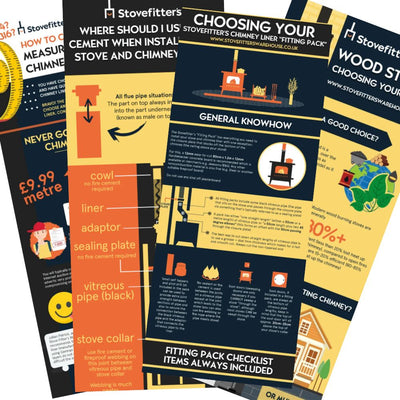
How to choose a wood burning stove for your property (includes infographic)
Infographics

What size wood stove do I need? Don't let manufacturers fool you!
Buying Guides
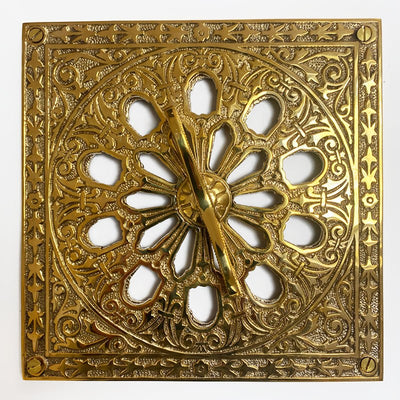
Do I need an air vent for a wood burning stove? If I do not bother?
Buying & DIY

Knowledge Tree: Process of buying and installing a wood burning stove
Buying & DIY
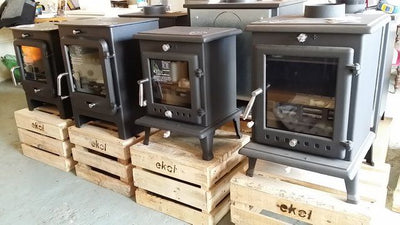
Chinese wood burners – should I buy one or are they all crap?
Buying Guides

What else do I need to buy to install a wood burning stove?
DIY Guides

Infographics for wood burning stove purchase and install
Infographics
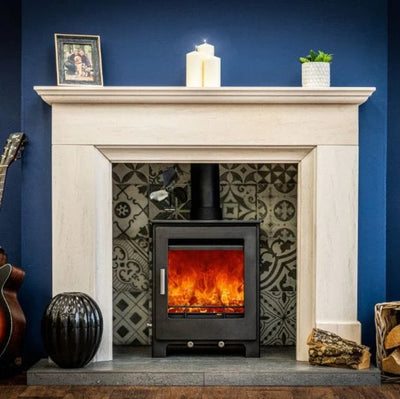
Wood burning or multifuel stove? A stove fitter decides.
Buying Guides
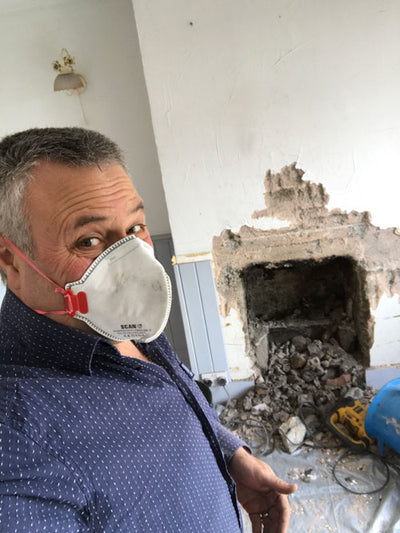
A few words from Julian
Buying & DIY
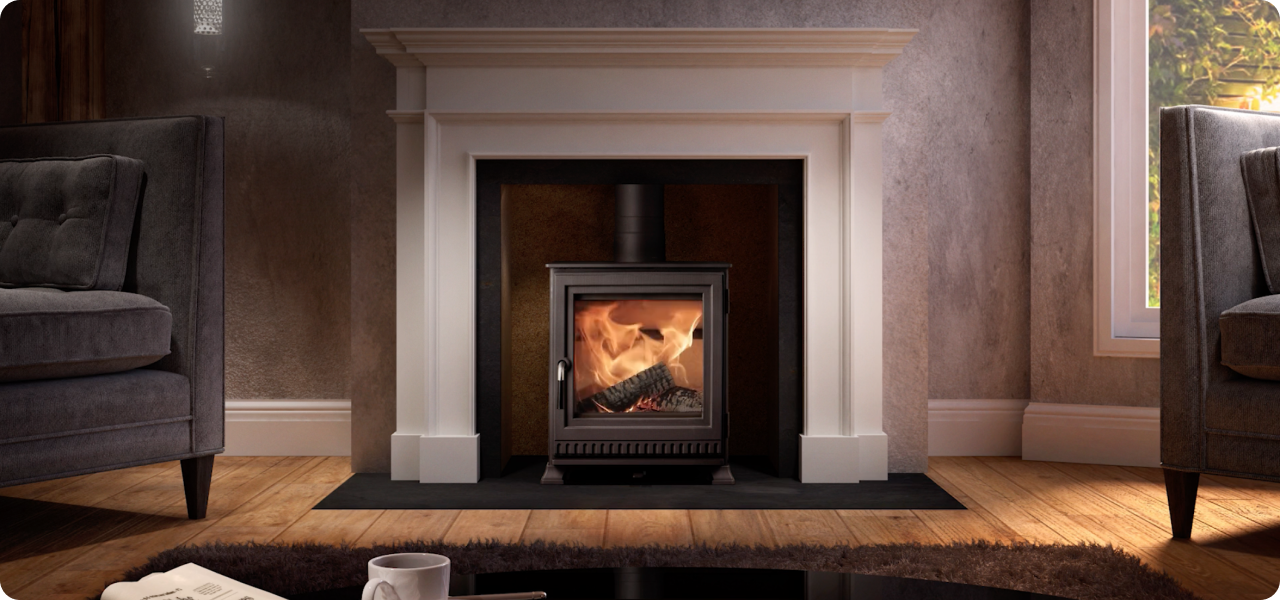
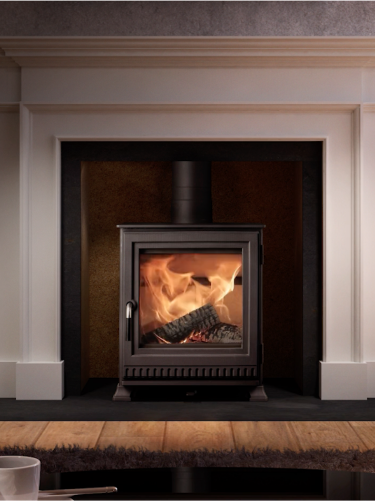
Find my perfect stove
Answer 3 simple questions and we will show you the best Stoves for your space.


